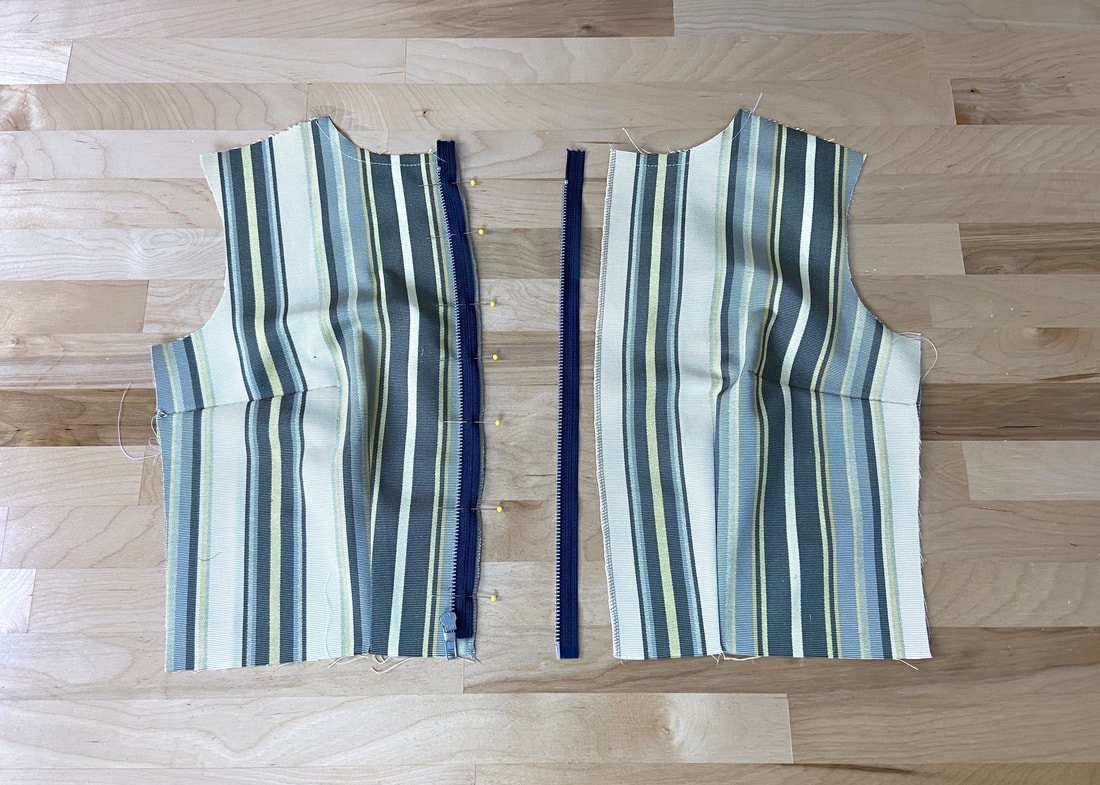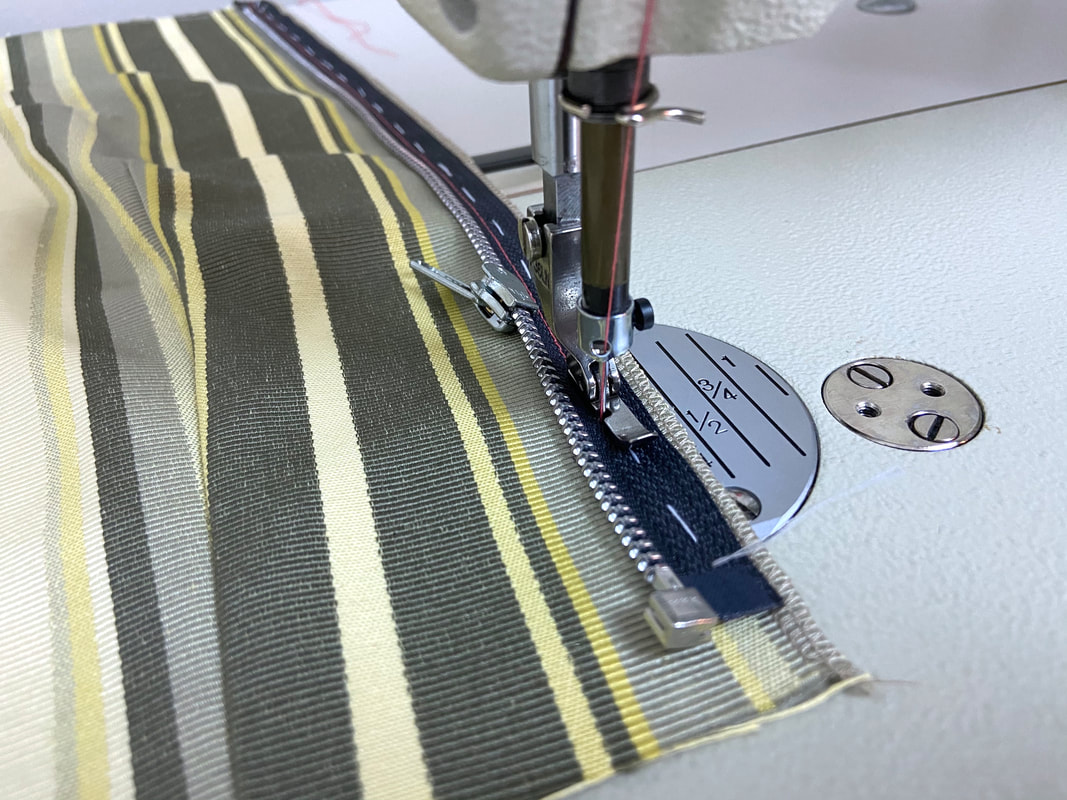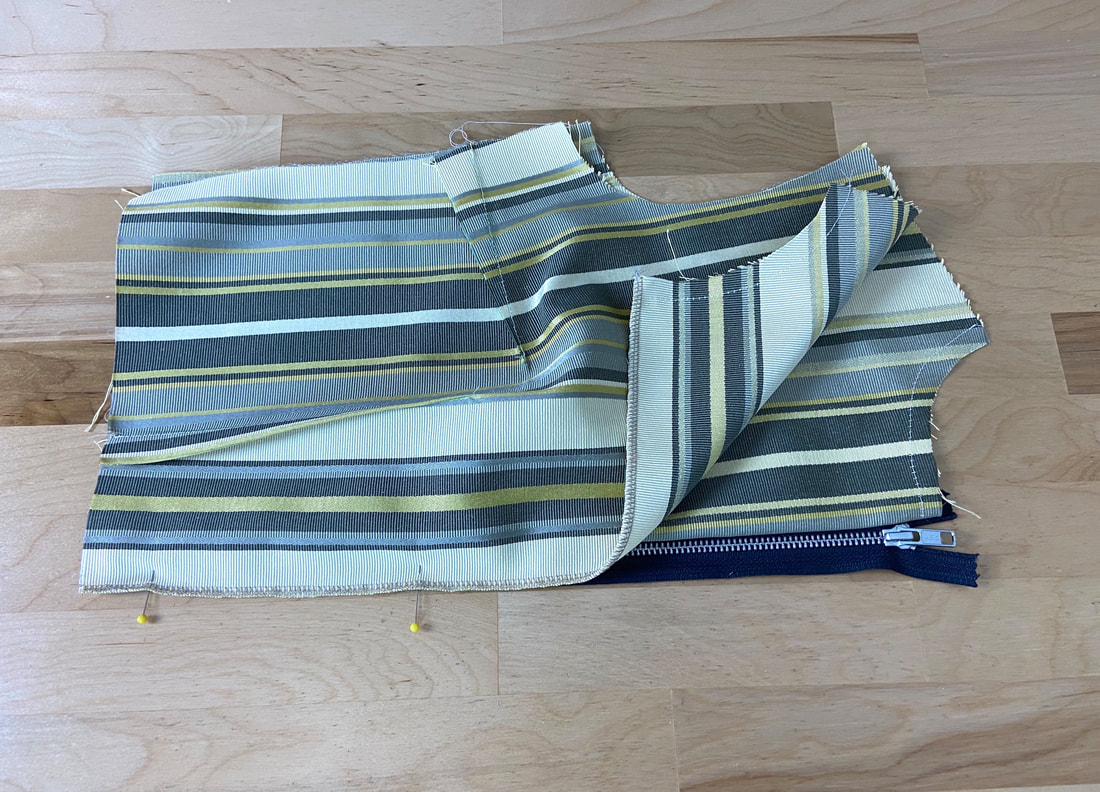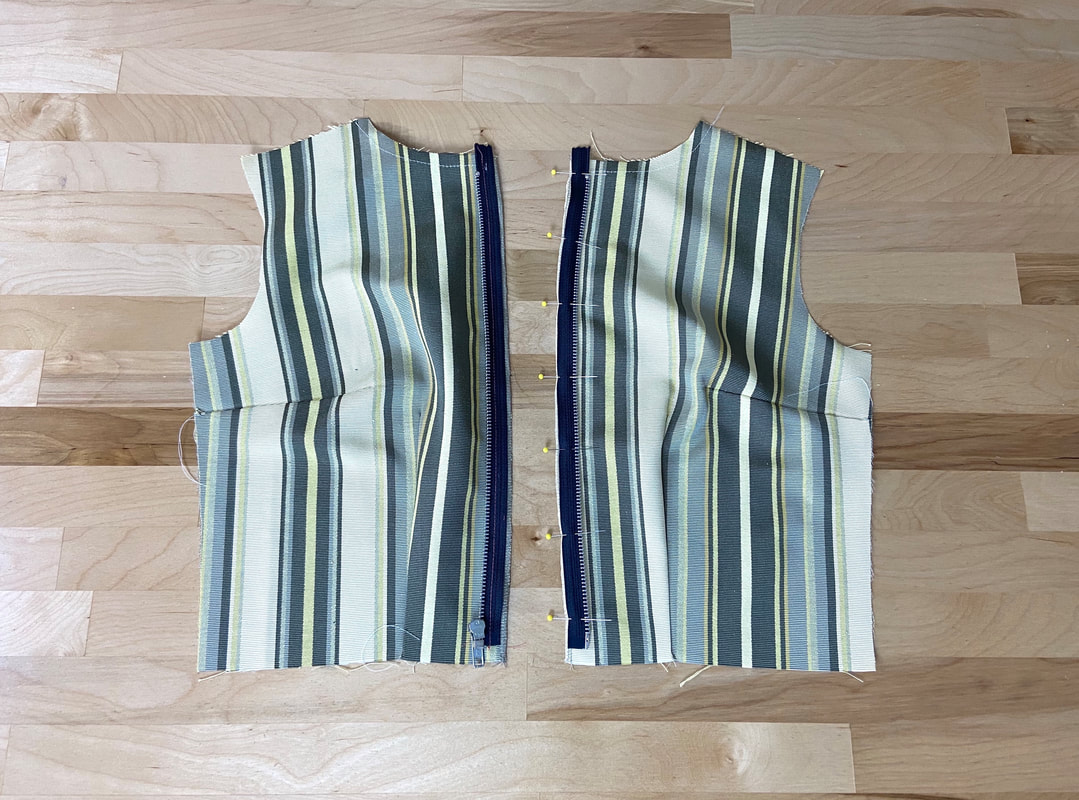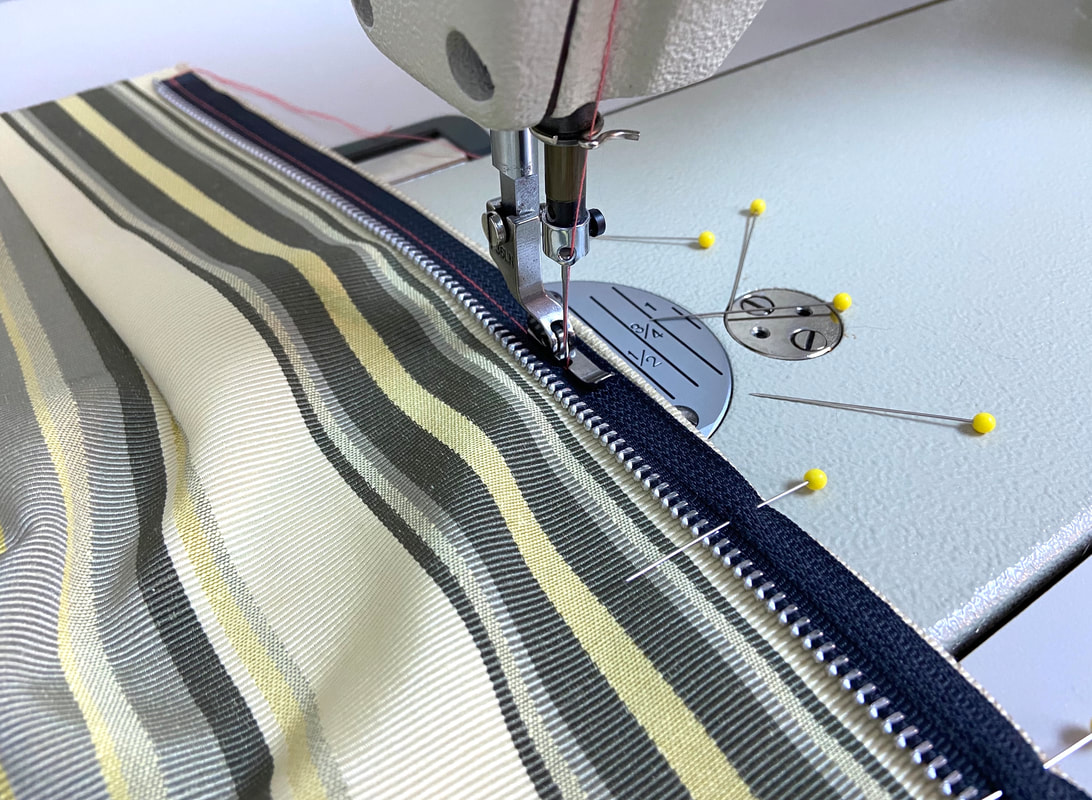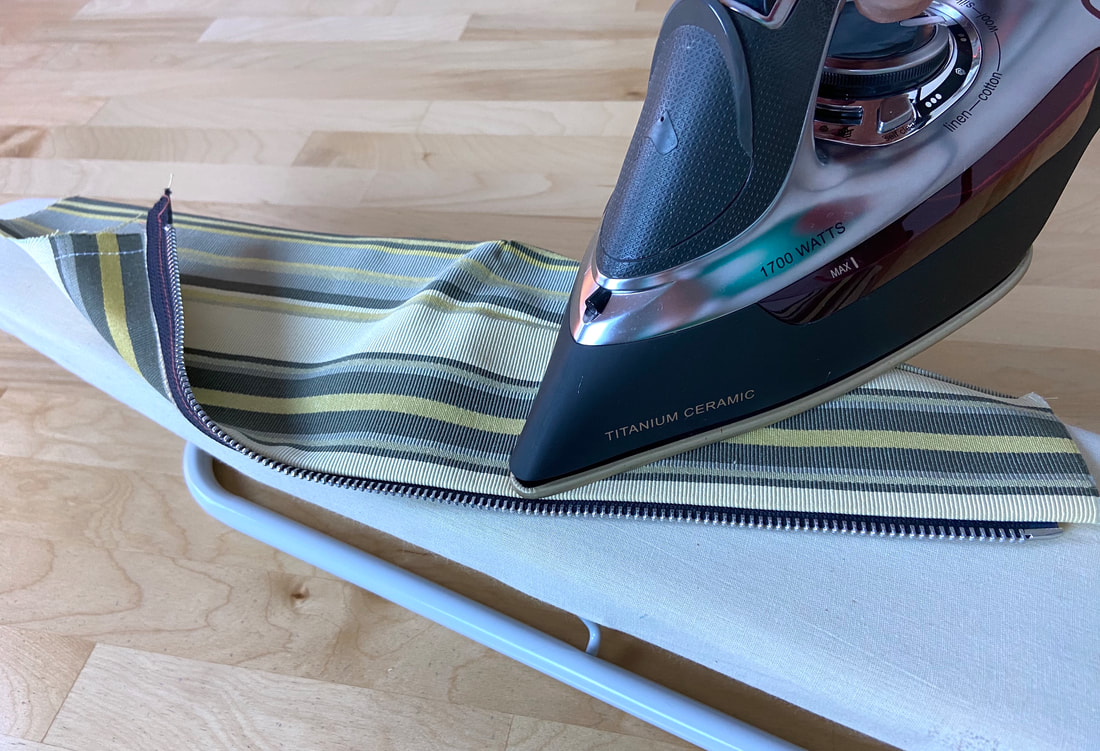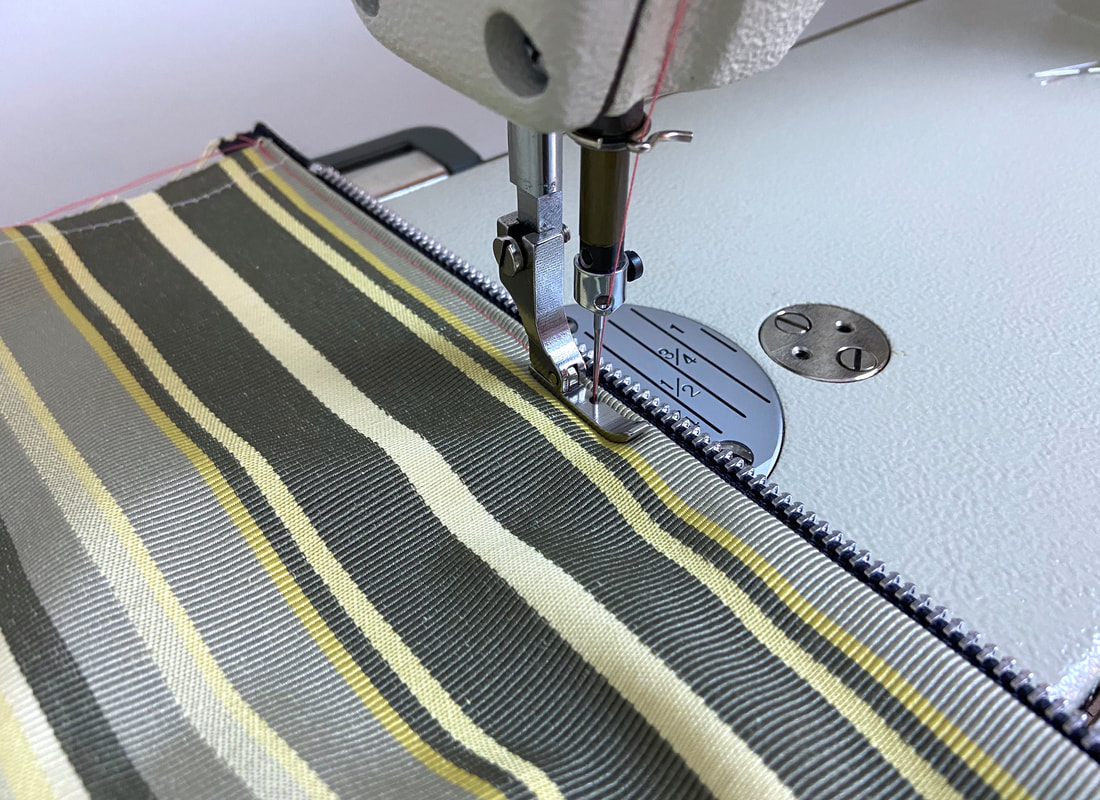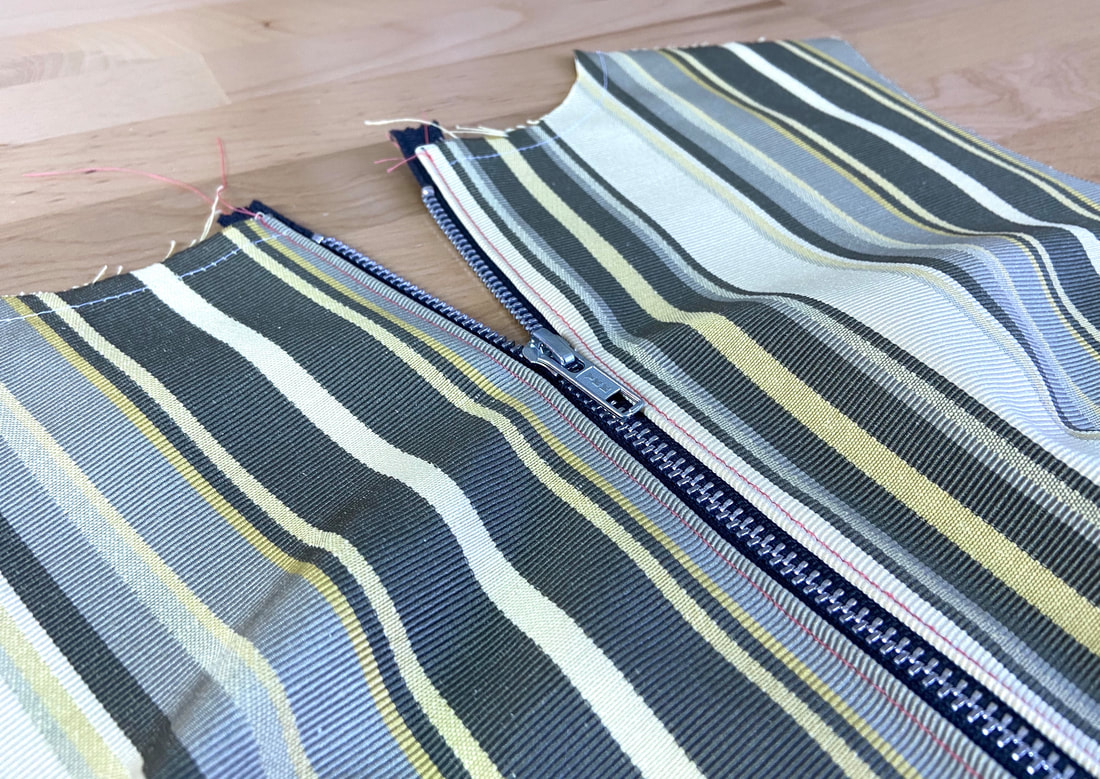Mini Tutorial: How To Sew A Topstitched Separating Zipper Application
1. Open and separate the zipper portions and align one of them to its corresponding garment edge with face sides touching. If the tape width is equal to the seam allowance width, the zipper tape edge should align with the garment edge.
Insert pins perpendicular to the edges to secure the layer in preparation for machine stitching. If this is your very first time sewing a separating zipper, it helps to use hand basting instead of pins to keep the two layers more stable during the machine stitching process to follow.
Note: It is easiest to clean-finish each garment edge individually prior to aligning and stitching the zipper as this can be difficult to do once the zipper is permanently stitched.
Insert pins perpendicular to the edges to secure the layer in preparation for machine stitching. If this is your very first time sewing a separating zipper, it helps to use hand basting instead of pins to keep the two layers more stable during the machine stitching process to follow.
Note: It is easiest to clean-finish each garment edge individually prior to aligning and stitching the zipper as this can be difficult to do once the zipper is permanently stitched.
2. Using a zipper presser foot, stitch the the zipper tape to the garment layer underneath at about 1/4" away from the zipper teeth as shown above. If you want more of the zipper tape to show in the finished exposed zipper application, you should stitch farther away from the zipper teeth.
3. Close the zipper all the way up and lay it flat on the table with right sides facing up. Place the unstitched portion of the garment on top of the one housing the zipper with face sides touching and edges aligning. Insert pins perpendicularly through both edges- the pins should be inserted from the tape side as pictured above.
4. Open the zipper and separate the two garment portions. The pinned zipper portion should now be aligned perfectly along the edge with the pins inserted perpendicularly from the zipper tape side.
5. Use a zipper foot to stitch the zipper tape, removing each pin as you approach it. Apply the stitch at about 1/4" from the zipper teeth (or the same distance used on the other, already-stitched zipper portion).
6. Flip the zipper tape and seam allowance toward the garment's wrong side such that each zipper portion is in its natural, finished position. Iron the garment's folded edge to flatten and smooth out the seam allowance layers underneath.
7. To complete the zipper application, topstitch next to the folded edge catching the seam allowance and zipper tape underneath. Since this topstitch will serve as a semi-decorative finish, you can use a contrast color thread for a more unique visual effect.
Repeat the topstitching process on both sides of the garment. While this topstitch becomes part of the garment's visual design, it also covers an important functional element. It keeps the zipper tape and seam allowance layers permanently flat which prevents them from rolling to the garment's face side, especially with prolonged use and machine washing.

